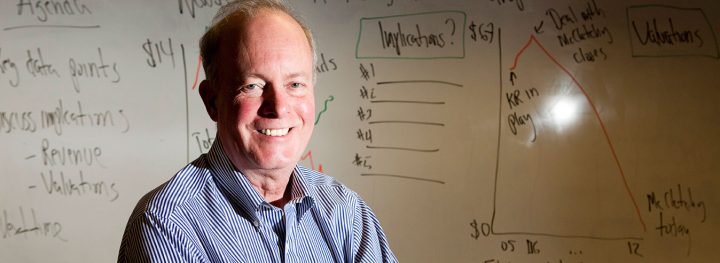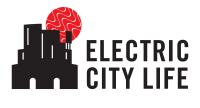
President & Publisher, Ledger-Enquirer, 1995-2004; Don E. Carter Chair of Excellence in Journalism, emeritus, University of Georgia
Greenman presents “How to Survive as a Writer in the 21st Century” Masters Class at Columbus Writers Guild Conference on Saturday, Sept. 21
How does a writer survive in the 21st century?
“The point I’m going to make, which is on the business of writing, presumes that the folks in this audience want to write well and and want to sell their work to the extent they can make some kind of living. What I’ll say is that it’s not enough to be a good writer: You have to do something more to distinguish yourself.
It has to be something that is valuable. It has to be something that is rare. And it has to be something that is difficult to duplicate.
I’m going to focus on 3 approaches by 3 Georgia writers. One of them is a fiction writer. Two non-fiction. Let’s save their names until the writers conference.
The fiction writer has become a very skillful marketer. And she will tell you that, over the course of a year, as much as 40% is given over to marketing to her work. Just 60% giver over to the writing. Without the marketing, though, her writing wouldn’t have an audience. is given over to her writing.
Without the marketing, the writing wouldn’t have an audience. And she’s really good at it. So marking is one approach.
Another approach is to develop an additional skill that supplements and undergirds the writing. That’s the second example. This was a young woman I knew through the University of Georgia She got a degree in journalism—but also got a degree in computer science.
She has emerged as one of the nation’s leading experts in data for journalism. Gathering and producing results from the data. Not just numbers—it’s called Data Visualization. She’s so good at that she’s now an editor at the New York Times. I remember the day she came into my office as a senior looking for work and told me, ‘I got 3 offers and it looks like the best one is for $85k and they say they’re willing to renegotiate upward.’
And the third example is a young journalist who became a subject-matter expert by getting a master’s degree in health and medical journalism She can write with real expertise about heath and medicine. Who’s not interested in that? It’s everyone’s concern. It’s ⅛ of the U.S.economy. She’s taken courses in epidemiology; she’s taken courses in biostatistics; she’s taken courses in public health.
In each case, they’ve developed an additional skill that is rare, that is difficult, and is in high-demand. That separates them from the generalist writers. My sense is that in the 21st century you have to add something like that.”
What role does journalism play in the community it covers?
“The ideal is that it provides people with the Information they need to govern themselves.
Done well, there are lots of examples, lots of data, lots of studies, showing that high-quality journalism contributes to better governance..I think it’s more than that for a lot of consumers. It also sought to entertain. I look forward to the comics in the morning as much as the news on the front page.”
Why have daily newspapers suffered so much with the shift from print to digital?
“They’ve lost advertising revenue—that’s the key.
In most markets, as recently as 2000, 80% of the revenue came from advertising. It paid for everything. Ad revenue subsidized the journalism, the circulation, everything. As advertising revenue declined, there was nothing to replace it.
As print migrated to digital, the thought was that ad revenue would go with it. But that $100 ad in print would value at about $10 on a website. It’s worth about $1 on a hand-held device.
Television has suffered similarly. Only media that is thriving at this moment is podcasts. I don’t know if anybody is making any money But they are sure drawing big audience. Public radio is also drawing big audiences but it’s not drawing big money. Look at the semi-annual beg-a-thons. Studies show about 12% of the public-radio audience contributes to the station. 82% don’t. That means there’s a lot of free-riders.
So the market’s not particularly hopeful right now. Books surprisingly are doing pretty well. Magazines are doing terribly. Newspapers are doing terribly. Television is down. It’s a hard way to earn money.”

Image courtesy UGA Today
How has technology affected the profession?
Not new to their lives. The technology that has been transformative has been the Internet and everything that’s come after that—and, in the last dozen years, social media.
Really, it’s an extension of the pace of information ever since satellite enabled television and radio to be live instantaneously anywhere in the world.
That’s one thing. The other thing is the technology is cheap and ubiquitous. This allows everyone to be a publisher. No more gatekeepers. The newspaper industry I worked in in the 70s, 80s, 90s, and even into the 2000s, these organizations were thought of as gate-keepers. The New York Times produced a high level; supermarket tabloids that was fairly low. But all functioned as gatekeepers and all kind of picked their spots.”
Technology facilitates self-publishing. Some would say the problem is that there is nothing to control the quality/. It’s so easy to produce good images—it all looks pretty good. Don’t know if it’s fair or balanced or even real.”
What aspects of journalism remain constant in the midst of all these changes?
“For a great number of journalists, they are still relying on the standards they were taught decades ago:
Be neutral.
Take care to be accurate.
Be fair.
Do no harm.
And try to reflect the public interest, the public good, the public need.
I would say that most professional journalists working today embrace that. True north for the profession—even in this much, much reduced scale—hasn’t changed all that much.”
What did teaching at UGA tell you about the next generation of journalists in our state?
“I was struck by how uniformly bright, curious, and hard-working the students were whom I taught at the Grady School at UGA.
They come from everywhere in the state of Georgia; there’s this sense North Atlanta suburbs and that’s it and they’re all pretty well off. That’s not true.
I met plenty of students and families struggling to pay to go to that school.Therese were all students with HOPE Scholarship—you have to test at least that well to be accepted into the Grady School.
At its highest pay-outs, HOPE covers about $8k against an estimated annual cost of $21k to go to school. That balance of $13k is substantial for a lot of students and their families
”So I took care in the assignments and programs to bring in kids who didn’t have a lot of money. I created a study-abroad program to be the lowest-cost program at UGA. They would go and do real journalism. First year in Cambodia, two students produced stories that were new to the world. The work was high quality and high impact.
Pretty well trained, immersed in a foreign environment, where they don’t speak the language, and working on their own, these students can do very good journalism.”
What is your assessment of the current state of journalism in Columbus, Georgia?
“Well, it’s weak. And I think that all the journalists working in Columbus would agree with that.
The Ledger-Enquirer’s newsroom is a shadow of what it was once before. Even as recently as when I retired in 2004, there were 62 people in the newsroom. There are only 3 or 4 reporters now. And they are as frustrated as you can imagine that the newsroom as a whole can’t do the job they know should be done.
I don’t see television newsrooms in much better condition.
I think the condition of local journalism is weak because it doesn’t have adequate scale. They don’t have the people. They don’t have the resources. And the stories that should be done are not.”
How will the industry evolve over the next 10 years?
“It’s impossible to forecast. If it continues on the track it’s on, it won’t disappear, but is further weakened.
There are models to rebuild local journalism. Some of these experiments have succeeded but man have failed. Things can be done. Collaboration across institutions. Involvement of colleges and universities. The philanthropic community. It’s all valuable and it’s all possible. The Columbus way, as iv’e written about, and a lot of people have talked about, delivers on a public-private partnerships is, I think, unduplicated in city this size in the country. So if there is a will to do better, there are local resources in talent and money.
But I don’t know if there is the will. I know I’ve seen the frustration. It’s hard to know what to do.”

Image courtesy UGA Today
Age: 69
Education: “Public schools though college. Graduated from a working-class state university in Youngstown, Ohio, where I was an American Studies major, Journalism minor, and edited the school newspaper. After that, I joined the Navy. As an officer based in Washington, D.C., I earned a masters degree in media studies. Much later, I did the Advanced Management program at Stanford University’s Graduate School of Business.”
Book rec: “Most interesting book I’ve read recently is a memoir about writing that Robert Cairo wrote called, “Working” He writes extensively on the art and skill of reporting.”
Favorite all-timeAmerican journalist: “Ida Tarbell, for her courage. She was an investigative reporter who did dangerous things to get important stories.”
Proudest professional moment: “When I was working for the Akron Beacon Journal and the British financier Sir James Goldsmith took steps to take over Akron’s Goodyear rubber-tire company. Ultimately, they ran the guy out of town. We did remarkable work. Everyday, a strong Page 1 story, sometimes 2 or 3. Not press release, not events, but digging up stuff.
The team I helped lead compiled a 40,000-word reconstruction of what happened that read like a novel. For that, the Beacon Journal staff won a Pulitzer Prize.”
Toughest professional challenge: “Being an editorial page editor. I spent all my time as a neutral information gatherer—I was paid to not come up with opinions. Then I was paid to come up with opinions. I found that extremely difficult.”
Ideal 36 hours in Columbus, Georgia: “It’s a toss up between exploring the African-American history in Columbus—which is rich and varied and not as well known as it should be. Or following the Civil War history in Columbus—which is also rich and varied and not as well known as it should be.”
